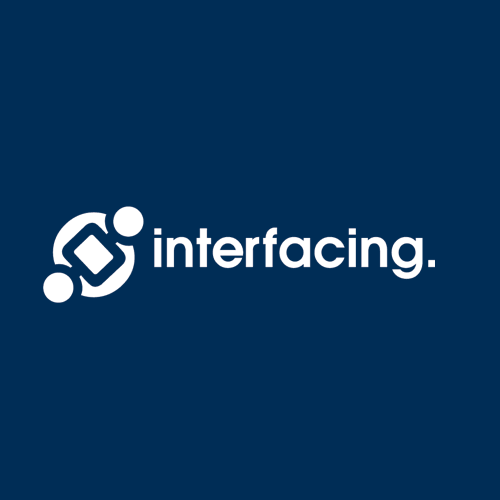What Is Business Continuity Management Software?
Business continuity management software (BCMS) is a complete application that helps firms plan, implement, and maintain vital activities during disruptive events. Whether it's a natural disaster, a cyber assault, or any unforeseen occurrence, BCMS offers enterprises with the tools and resources they need to mitigate the damage and quickly resume normal operations.
The software enables firms to take a methodical and proactive approach to identifying potential hazards, assessing their impact, and developing mitigation solutions. It enables firms to develop contingency plans and document important business processes, ensuring that operations run smoothly even during unexpected circumstances.
BCMS has several critical aspects, including risk assessment and analysis, business impact analysis, incident management, crisis communication, and recovery planning. Using these features, firms may detect potential vulnerabilities, prioritize important activities, and develop a complete plan to assure continuous operations. BCMS also enables firms to run simulations and exercises to assess the effectiveness of their plans and make required changes.
This not only assures the organization's preparation, but also aids in the identification of any gaps in the plan. Furthermore, BCMS software supports real-time monitoring and alerting, allowing enterprises to respond swiftly to possible threats and mitigate their impact.
It also automates the administration of recovery operations, resulting in long-term time and resource savings.When selecting a BCMS, consider its compatibility with various systems, convenience of use, and the quality of support given by the provider. Furthermore, the software must meet the specific regulatory requirements of the industry in which the business works.
What Are The Recent Trends In Business Continuity Management Software?
Business Continuity Management (BCM) software is an essential tool for any firm that wants to assure seamless operations during unexpected disruptions or calamities. With technology improvements and a surge in possible dangers, the BCM software industry has expanded significantly in recent years.
we'll look at the newest trends in BCM software to help you make an informed purchase decision.
1) Cloud-Based Solutions: The proliferation of cloud technology has had a significant impact on the BCM software market. Traditional on-premise systems are being replaced by modern, cloud-based alternatives that provide greater flexibility and scalability. Cloud-based BCM software enables enterprises to access key business data and resources from any location, making it an excellent choice for remote and distributed teams.
2) Automation And Integration: To remain competitive in today's fast-paced business environment, firms must streamline their procedures. This has resulted in the creation of BCM software solutions with automation, integration, and analytics capabilities. These capabilities help firms automate tedious activities, integrate data from several sources, and acquire a better understanding of their business continuity strategies.
3) Mobile Applications: As remote work has grown in popularity, mobile applications have emerged as a major trend in BCM software. These apps enable users to access essential corporate information, engage with stakeholders, and receive real-time alerts and notifications via their mobile devices. Mobile applications also allow firms to maintain business continuity even when workers operate remotely or on the go.
4) Emphasis On Cybersecurity: As cyber risks have increased, firms have prioritized cybersecurity in their business continuity plans. As a result, BCM software providers are incorporating cybersecurity features such as data encryption, vulnerability assessments, and disaster recovery capabilities into their products. This enables firms to protect essential data and systems, assuring continuity even during a cyberattack or breach.
5) Embracing Artificial Intelligence (AI): AI technology is transforming the BCM software marketplace. AI-powered systems can evaluate massive volumes of data, forecast future threats, and devise effective reaction strategies. As a result, AI-enabled BCM software is gaining popularity, particularly among larger enterprises with complicated business processes that necessitate regular risk assessments.
Benefits Of Using Business Continuity Management Software
Business continuity management (BCM) is an important part of any organization's operations. It assists firms in preparing for unanticipated disruptions and ensuring that operations continue uninterrupted. However, adopting a successful BCM strategy can be difficult and time-consuming. This is where Business Continuity Management software comes into play.
Here are some of the primary advantages of implementing Business Continuity Management Software for your organization:
1. Streamlines The BCM Planning Procedure: One of the most significant advantages of adopting BCM software is that it streamlines the entire planning process. It offers a unified platform for generating, managing, and updating your company's business continuity plans. This not only saves time, but also guarantees consistency and accuracy in your BCM strategy. Even non-technical people can quickly build and update their plans using simple templates and tools.
2. Improved Risk Assessment And Mitigation: BCM software enables you to perform a thorough risk assessment by identifying potential risks, assessing their impact, and prioritizing important business processes. This assists in designing appropriate mitigation methods to reduce the impact of anticipated interruptions. Regularly updating your risk assessment allows you to keep ahead of prospective risks and ensure your organization is well-prepared.
3. A real-Time Monitoring And Alarm System: Business continuity management software includes real-time monitoring and alerting systems. This enables firms to notice possible disruptions and respond quickly to mitigate their impact. You can set up notifications for certain occurrences, such as power outages or system failures, to respond swiftly and activate business continuity plans.
4. Ensures Regulatory Compliance: With an expanding number of rules and compliance standards, organizations must ensure that they are meeting all of the criteria. BCM software helps firms stay compliant by offering templates and instructions for following industry best practices. It also provides easy customisation to satisfy certain regulatory needs.
5. Easy Communication And Collaboration: During a crisis, effective communication is critical for keeping operations going smoothly. BCM software offers a centralized communication solution for all stakeholders, including as employees, suppliers, and customers. This keeps everyone informed and updated on the organization's response to a disturbance.
6. Cost-Effective: Solution Manually implementing a BCM plan might be costly due to the time and resources required. With BCM software, the entire process is automated, saving organizations both time and money. It also decreases the likelihood of human error, which can result in costly blunders during a crisis.
Important Factors To Consider While Purchasing Business Continuity Management Software?
Business continuity management (BCM) software is critical for firms to maintain smooth and efficient operations during unanticipated disruptions or crises. As a result, it is critical to properly examine and select the appropriate BCM software that meets your organization's needs and goals.
Here are some critical aspects to consider while selecting BCM software:
1. Functionality Scope: The first step in picking appropriate BCM software is to identify your organization's specific software requirements and expectations. Is your organization in need of a comprehensive BCM solution, or only a few functions like risk assessment or incident response? Examine the software's scope of capability to ensure it fulfills your organization's requirements.
2. Usage: BCM software should be easy to use and intuitive in order to increase adoption and usage throughout the company. To improve the user experience, look for software with a straightforward and well-organized user interface, customisable dashboards, and easy navigation.
3. Integration And Compatibility: Most firms already have software systems in place, therefore it is critical to ensure that the BCM software works seamlessly with them. Consider whether the software is compatible with your current systems, such as security management systems, emergency communication systems, or customer relationship management systems.
4. Scalability: As your organization expands, so will your BCM requirements. It is critical to select software that can scale with your company's growth and changing business needs. An agile and flexible BCM software allows you to add additional features and users as needed.
5. Customization Options: Every organization has different BCM requirements, therefore a one-size-fits-all strategy may not be appropriate. Look for software that allows you to customize it to meet the unique needs of your firm. This ensures that the software is consistent with your organization's processes and procedures.
6. Cloud-Based Or On-Premise: BCM software is available in both the cloud and on-premise, and each offers advantages and limitations. While cloud-based software is more flexible and accessible, on-premise software provides greater control and protection. Consider your organization's IT architecture, resources, and data security rules to determine which choice is best for your needs.
7. Training And Support: Implementing a new software system in a company can be difficult, thus it is critical to examine the training and support provided by the software vendor. Look for software that provides extensive training and assistance to guarantee a seamless transition and successful adoption of the product.
8. Security And Compliance: Because BCM software handles sensitive and vital data, it is critical that it is secure and complies with all applicable regulatory requirements. Look for certifications like ISO 22301 or SOC 2 Type 2 to guarantee that the software satisfies the essential security and compliance requirements.
9. Pricing: Finally, assess the software's pricing. Look for software that is cost-effective and fits into your organization's budget. Avoid selecting the cheapest option, since it may result in sacrificing crucial features and functionalities.
What Are The Key Features To Look For In Business Continuity Management Software?
When it comes to selecting the best Business Continuity Management Software, customers should consider a few crucial factors. These features will ensure that the software not only fulfills their immediate requirements, but also adapts and grows with their company over time.
Here are the key elements to look for while selecting Business Continuity Management Software:
1. Automatic Backup And Recovery: One of the key functions of Business Continuity Management Software is to automatically backup vital data and systems so that they may be restored in the event of a disaster. Look for software that allows you to perform automatic and continuous backups, eliminating the need to manually initiate backups.
2. Disaster Recovery Planning: Another important component to consider is disaster recovery planning. This includes developing and maintaining a detailed plan for responding to a disaster and resuming business operations. The software should make it easier to create and update this strategy, as well as provide step-by-step instructions for implementing it.
3. Real-Time Monitoring: Real-time monitoring is critical for detecting and correcting any disturbances or difficulties that may occur. The software should include a robust monitoring system that notifies you of potential problems and allows you to take fast action.
4. Cloud-Based Storage: Storing backups in the cloud increases security and accessibility. Look for software that provides cloud-based storage alternatives to ensure that your data is safe even if your physical systems or infrastructure are destroyed by calamity.
5. Flexible Restoration Options: If a calamity strikes, you may need to swiftly restore your data and systems to their prior state. Look for software that provides several restoration options, such as full or partial restoration, to match your individual requirements.
6. User-Friendly Interface: A user-friendly interface is required for easy navigation and management of software. Look for software with a simple and intuitive interface that allows you to monitor and manage your backups and disaster recovery plans.
7. Compatibility And Integration: Select Business Continuity Management Software that is compatible with your current systems and infrastructure. This will allow a smooth connection and reduce potential disruptions during installation.
8. Scalability: As your firm expands, your software requirements may alter. It is critical to select software that can scale with your business and meet growing data and system requirements.
9. Customization: When it comes to firm Continuity Management, each firm has its own set of requirements. Look for software that may be customized to meet your individual specifications and demands. Keeping these critical aspects in mind, customers may select the appropriate Business Continuity Management Software that will not only suit their current demands but also position them for long-term success.
Why Do Businesses Need Business Continuity Management Software?
Businesses require Business Continuity Management (BCM) software to ensure that they are prepared and protected from potential disruptions to operations. Natural disasters, cyberattacks, power outages, and other unforeseen events can all have a substantial influence on a company's capacity to operate. BCM software assists firms in developing and implementing risk mitigation plans, as well as managing the impact of disruptive events. It serves as a consolidated platform for developing, implementing, and tracking business continuity strategies. Here are a few main reasons why firms need BCM software:
1. Risk Management: BCM software enables firms to identify and assess potential hazards to the organization. It enables them to prioritize risks and plan for their prevention or mitigation.
2. Business Continuity Planning: The program helps firms create and document plans for dealing with disruptive situations. These plans detail procedures and protocols to ensure that critical operations can continue even in the face of disruptions.
3. Communication And Collaboration: During a crisis, effective communication and collaboration are critical to corporate continuation. BCM software provides a single platform for teams to communicate and collaborate, resulting in a more coordinated response to an incident.
4. Data Management: In the case of a disruption, firms must access crucial information and data to maintain operations. BCM software centralizes and secures data, making it conveniently accessible in the event of a disaster.
5. Testing And Training: Business continuity plans work best when they are tested and updated on a regular basis. BCM software enables firms to conduct simulations and drills to test their strategies and discover areas for improvement. It also offers training resources to ensure that staff are aware with business continuity practices. In brief, BCM software is critical for businesses to build resilience and maintain success in the face of interruptions. It simplifies the entire business continuity process, from risk assessment to recovery, allowing companies to reduce the effect of disruptions and restart operations swiftly.
How Much Time Is Required To Implement Business Continuity Management Software?
The time required to adopt Business Continuity Management (BCM) software varies based on a number of factors, including the complexity of your business operations, the size of your organization, and the capabilities of the software you select. The usual time to completely implement BCM software ranges from a few weeks to many months.
The first step in installing BCM software is to thoroughly analyze your organization's processes, identifying important functions and potential hazards. This could take a few weeks or more, depending on the complexity of your organization. This phase requires the involvement of all relevant stakeholders to ensure that all critical processes are recognized. After the study is completed, the following step is to choose the best BCM software for your firm.
This process can take anything from a few days to a few weeks, depending on how many vendors you're looking at and how complex your requirements are. It is critical to thoroughly consider each choice and select the software that best suits your organization's specific requirements. Following the selection of software, the next step is implementation.
This step entails customizing the software, creating workflows, and integrating it with other systems and applications. The time of this phase varies greatly based on the intricacy of your business operations and the software's functionality. On average, the implementation procedure can take 2-3 months.
Once the program is installed and configured, the next step is to train your employees on how to use it successfully. This training can take anything from a few days to a few weeks, depending on the size of your organization and the software's sophistication. It is critical to provide extensive training to guarantee that all employees are proficient with the software.
What Is The Level Of Customization Available In Business Continuity Management Software?
Business Continuity Management Software (BCMS) is an essential tool for businesses to keep their operations running in the event of unforeseen disruptions. Each organization has unique demands and requirements, thus it is critical to locate a BCMS that can be tailored to those specific needs. When contemplating BCMS, it is critical to understand the level of customisation available in order to select a tool that is aligned with your organization's objectives.
The extent of customisation in BCMS varies depending on the software vendor and the tool's individual features. However, most BCMS provide a high level of flexibility, allowing businesses to adjust the software to their specific business processes and needs. BCMS customisation includes the ability to establish and modify business continuity plans.
This feature enables organizations to design their specific recovery plans and procedures, such as identifying essential activities, assigning roles and duties, and establishing recovery time objectives. It also supports the customisation of plan activation triggers and communication methods. Another degree of customization in BCMS is the ability to adjust risk assessments and impact studies to individual company operations.
This includes the ability to define essential assets, potential risks, and impact on business operations in the event of a disruption. Organizations can also tailor their risk mitigation techniques and give risk ratings to specific processes or divisions. BCMS also provides customization possibilities for data backup and recovery procedures. This includes the option to schedule backups depending on business requirements, modify backup locations, and specify data recovery procedures and timescales.
Furthermore, enterprises can customize recovery point and recovery time objectives to ensure minimal data loss and downtime during an interruption. Furthermore, BCMS can be configured to work with other business systems and tools, such as incident management software and emergency alerting systems. This enables a more efficient response and communication procedure during a crisis, decreasing downtime and mitigating the impact on business operations.
Which Industries Can Benefit The Most From Business Continuity Management Software?
Business continuity management (BCM) is an important part of any organization's risk management strategy. It entails recognizing potential risks and devising a strategy to mitigate their impact while ensuring the smooth operation of the business in the case of a disruption. As the corporate world gets more complicated and unpredictable, the requirement for effective BCM strategies and solutions grows. This is where Business Continuity Management software comes into play.
But which sectors will profit most from this software? Let's have a closer look.
1. Banking & Finance: The financial sector is heavily regulated, necessitating strict BCM standards to defend against operational, financial, and reputational threats. Business continuity management software can help banks and financial institutions respond swiftly to interruptions such as cyber attacks, natural disasters, and system failures, reducing financial losses. They can also use this software to verify compliance with regulatory rules while maintaining customer trust.
2. Healthcare: The healthcare business handles crucial and sensitive information that is necessary for patient care. A disruption in operations can have serious repercussions, including jeopardizing patient safety and privacy. Business Continuity Management Software can assist healthcare companies in building resilience and ensuring the continuity of services in times of emergency. It can also help you manage communication with patients and stakeholders in a crisis.
3. Manufacturing: The manufacturing industry is susceptible to a variety of risks, including supply chain interruptions, equipment failure, and power outages. A strong Business Continuity Management Software gives the capabilities needed to detect potential hazards, create contingency plans, and guarantee important business functions run smoothly. It can also aid in managing inventories and supplier connections during a crisis.
4. Retail & E-commerce: The retail and e-commerce industries are increasingly reliant on technology, rendering them vulnerable to cyberattacks, system failures, and other disruptions. Retailers and e-commerce enterprises can use Business Continuity Management Software to identify important processes and resources, create backup plans, and assure quick recovery in the event of an interruption. This software can also provide real-time data and insights, allowing users to make informed decisions during a crisis.
5. Information And Technology: The IT industry is a fast-paced and highly dynamic environment, making company continuity an ongoing worry. IT organizations can use Business Continuity Management Software to establish and maintain a comprehensive risk management plan, which includes disaster recovery and data backup techniques. This software can also help manage and communicate with stakeholders, reducing disruption to corporate operations.
Conclusion
Finally, picking the correct business continuity management software is critical for every firm to provide effective response and recovery from potential disruptions. As previously noted, there are various important variables to consider while making a decision, including features, cost, integrations, and customer service. It is critical to properly assess each product and pick which one best meets your individual requirements and budget.
Additionally, relevant stakeholders must be involved in the selection process to ensure buy-in and successful implementation. We hope you found this buyer's advice useful in making an informed decision and ensuring the continuity of your firm.
Remember that investing in the correct business continuity management software might potentially prevent your company from substantial financial and reputational harm in the long term. Don't wait until it's too late; begin your search for the ideal software solution today.






















